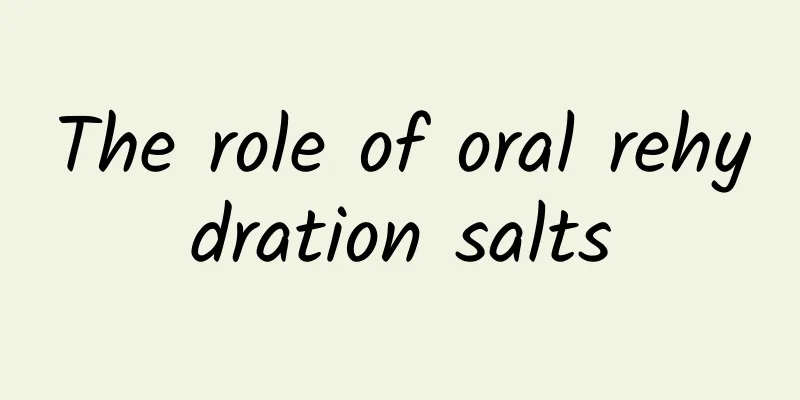The role of oral rehydration salts

|
Many acute diseases can easily lead to electrolyte imbalance. Sweating, severe vomiting, and diarrhea caused by various reasons can lead to a large loss of sodium and potassium ions in the body. The loss of sodium and potassium ions can easily cause electrolyte imbalance and cause dysfunction of the human body, leading to the occurrence of various complications and affecting human health. In clinical practice, oral rehydration salts are a commonly used method to supplement sodium and correct electrolyte imbalances. Oral rehydration salt II is a white crystalline powder. In addition to replenishing water, sodium and potassium, it also has a therapeutic effect on acute diarrhea. This product contains glucose. When the intestinal mucosa absorbs glucose, it can also absorb a certain amount of sodium ions, thereby increasing the intestinal mucosa's absorption of intestinal fluid. Drug Name Oral Rehydration Salts II Foreign name ORAL REHYDRATION SALTS II Drug Type Drugs for regulating water, salt, electrolyte and acid-base balance Pharmacokinetics The peak time of action is 8 to 12 hours Product Introduction Common name Oral Rehydration Salts II English name ORAL REHYDRATION SALTS II Pinyin name KOUFU BUYEYAN II Drug Category Drugs for regulating water, salt, electrolyte and acid-base balance Indications 1. Prevention and treatment of water loss in the body: To prevent and treat mild and moderate water loss caused by diarrhea, vomiting, and fluid loss through the skin and respiratory tract, water, potassium and sodium can be supplemented. Severe dehydration requires intravenous fluid replacement. 2. Treat fluid loss during diarrhea. This product is a compound preparation, and its components are as follows: each package contains 0.926 g to 1.131 g of sodium (Na), 0.354 g to 0.433 g of potassium (K), 1.276 g to 1.560 g of total chlorine (Cl), 1.305 g to 1.595 g of sodium citrate (C6H5Na3O7·2H2O), and 9.00 g to 11.00 g of anhydrous glucose (C6H12O6). Pharmacokinetics The peak effect time is 8 to 12 hours. Dosage 1. Adults (1) Treatment of mild to moderate water loss: ① For mild water loss, start with 50 ml/kg and drink it all within 4 to 6 hours, then adjust the dose as appropriate; ② For moderate water loss, start with 50 ml/kg and drink it all within 6 hours, then give the rest intravenously. (2) Treatment of acute diarrhea: ① Mild diarrhea, 50 ml/kg per day; ② Severe diarrhea, mainly intravenous drip until the diarrhea stops. 2. For the treatment of mild dehydration in children, start with 50 ml/kg, taken within 4 hours until the diarrhea stops. Moderate dehydration should be treated with intravenous fluid replacement. Adverse Reactions 1. Hypernatremia; 2. Excessive water; If either of the above conditions occurs, the medication should be discontinued immediately. 3. Vomiting, usually mild. This often occurs at the beginning of taking the medicine, at which time it can be taken in small amounts at several times. Contraindications 1. Oliguria or anuria; 2. Severe dehydration and signs of shock should be treated with intravenous rehydration; 3. Severe diarrhea, stool volume exceeds 30ml/kg per hour, at which time the patient is often unable to take enough oral rehydration salts; 4. Glucose absorption disorder; 5. Those who are unable to take oral due to severe vomiting and other reasons; 6. Intestinal obstruction, intestinal paralysis and intestinal perforation. Precautions 1. It is generally not used in premature infants. 2. Follow-up examinations: ① blood pressure; ② body weight; ③ blood electrolytes (mainly Na+ and K+); ④ signs of dehydration; ⑤ stool volume. 3. Patients with severe water loss or who have no obvious correction of water loss after taking this product need to switch to intravenous rehydration. Use in pregnant and lactating women: Not yet clear. Use in children: This product should be given to infants and young children in small amounts and multiple times. When the dose exceeds 100 ml/kg per day, they should be given drinking water to avoid hypernatremia. Use in elderly patients: There are no special precautions for the use of this product in the elderly. Drug interactions: Not yet known. Overdose: Specifications: 13.95 g Storage: Sealed and stored in a dry place. |
<<: Can Fengyoujing be taken orally?
>>: Xeloda, an oral chemotherapy drug
Recommend
How to distinguish black and brown stools
The color of a person's stool can determine t...
Three ways to relieve tongue prolapse
Glossopelvic pain is an uncommon condition, but i...
What are the symptoms of false pregnancy
False pregnancy refers to symptoms similar to pre...
Can mulberry leaves remove freckles?
Mulberry tree is a relatively common tree. In add...
Is moxibustion effective for uterine cold?
Moxibustion is a common method of treating diseas...
What to do if the soles of your feet peel
Peeling of the soles of the feet is the most comm...
Can Pangdahai cure constipation?
Constipation is very uncomfortable, and the feeli...
What medicine is better for heartburn and bad breath?
If you experience symptoms such as heartburn and ...
How to store fresh ginseng
Now that people's living standards have impro...
How to treat atopic dermatitis
Many people will be at a loss when facing atopic ...
Are there any sequelae of gas poisoning?
With the continuous changes of the times, people&...
What to do if lumbar disc herniation causes leg cramps
Nowadays, many people suffer from lumbar disc her...
Sometimes I feel nauseous after eating.
Do not ignore the nausea symptoms that occur in t...
Bloodletting therapy for 46 diseases
In traditional Chinese medicine, bloodletting the...
Hands feel numb and painful at night after working during the day
Excessive fatigue during the day can lead to extr...









